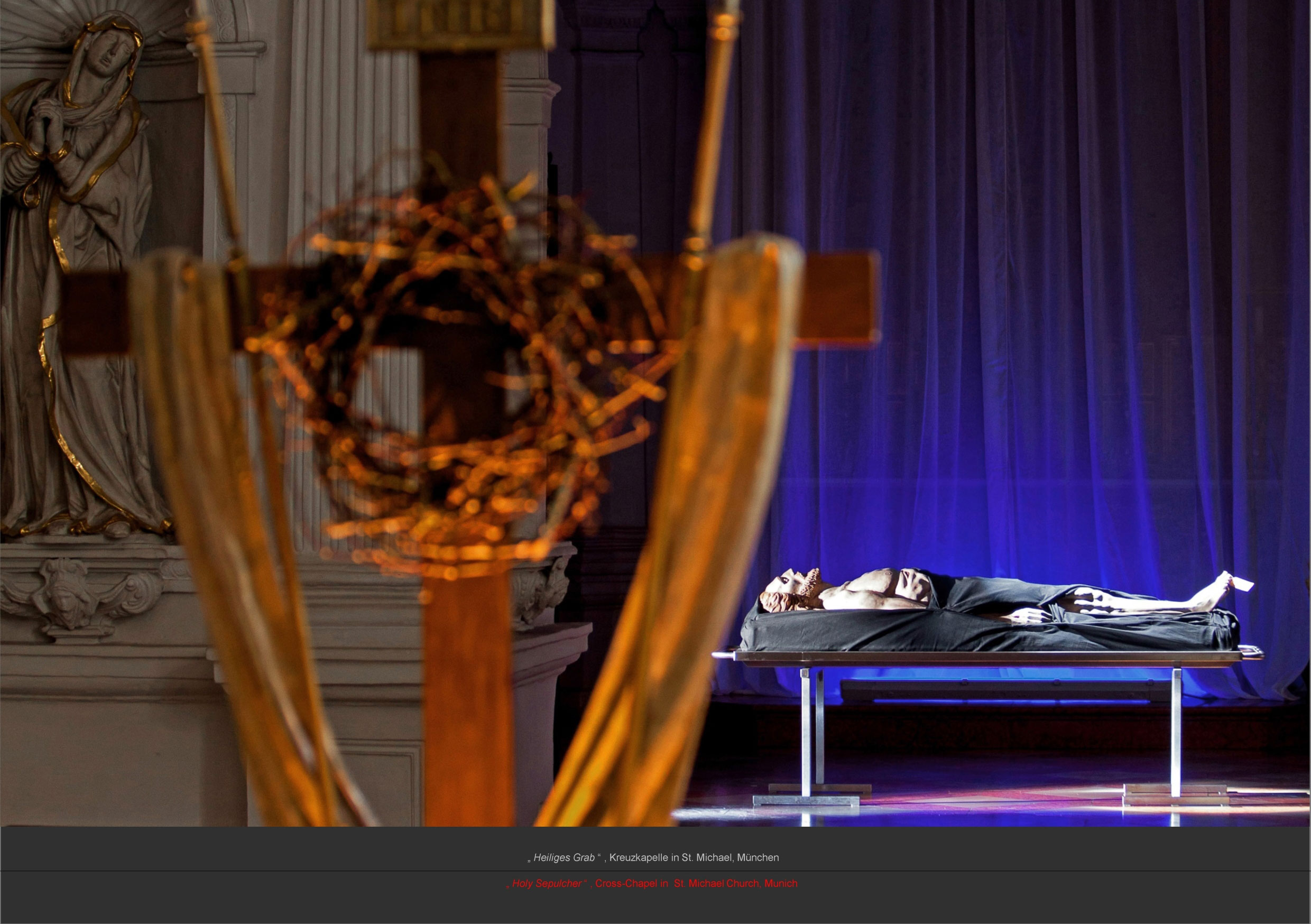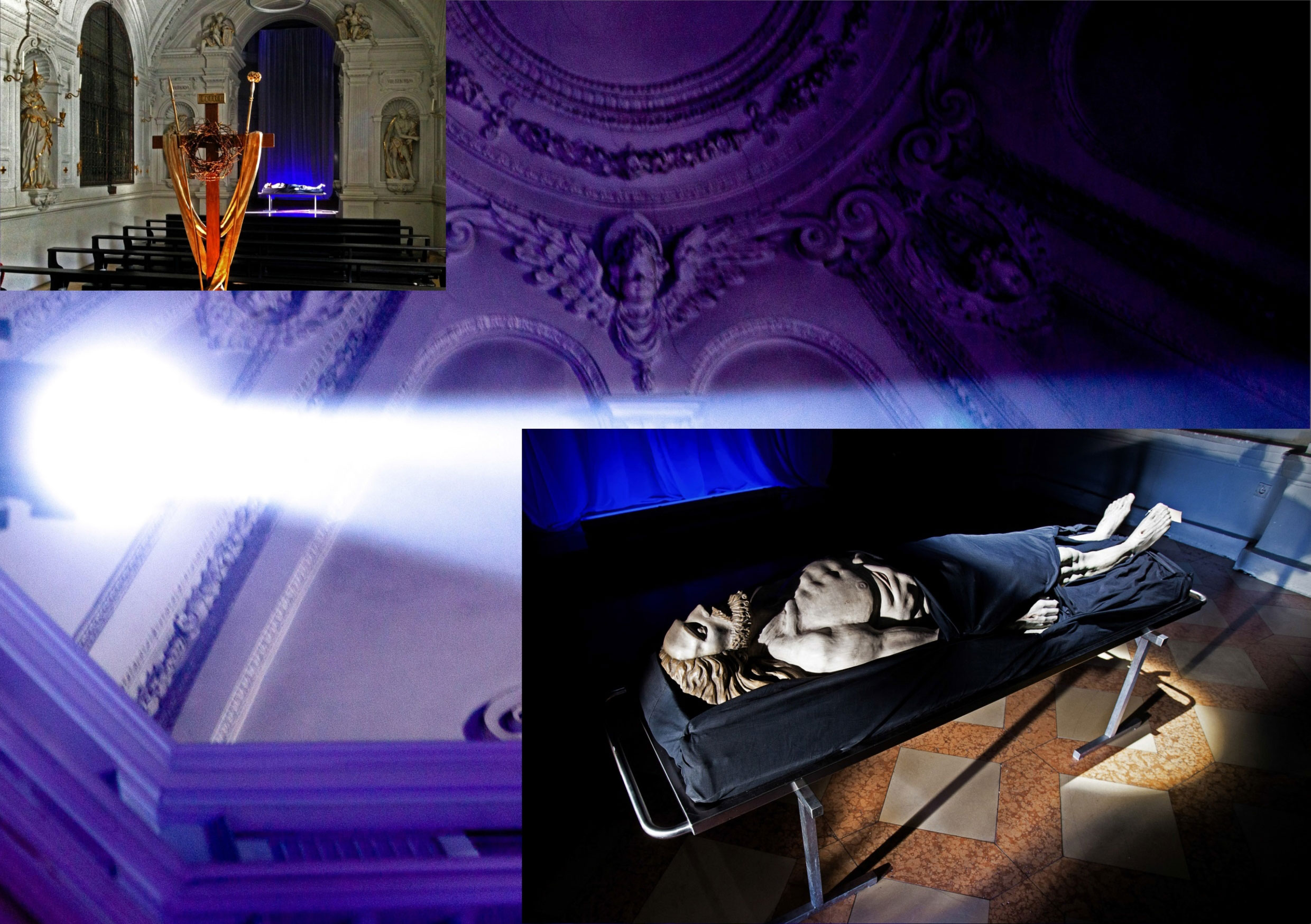„Holy Sepulcher“ in the Cross Chapel on „Good Friday“, Munich, St Michael Church
Sueddeutsche Zeitung
In the Cross Chapel of St. Michael, Architect Georg Hagemeyer staged the Corpus Christi drastically.
For this year’s Good Friday, everything is different in St. Michael, the renowned landmark of renaissance architecture in Munich. Stronger. Disconcerting. The rector of St. Michael grew tired of the usual presentation and looked for a powerful statement. His search led him to Georg-Maria Hagemeyer, a nonconformist architect. Hagemeyer proposed to present the Corpus Christi as a torture victim. He managed to borrow a stainless steel bier from the forensic institute. The bier is not a museum piece, so normally dead bodies lie on it. Now, on Good Friday and Holy Saturday, it is the historic wooden sculpture of the Redeemer.
Parts of the statue are wrapped in a black cloth. Originally, Hagemeyer wanted to insert the corpse in a black plastic body bag, “but they are currently available only in white.” From the right big toe hangs a name tag. Cold scalpel-sharp light cuts shadows and makes the bones clip out. Theatre lights bath the presbytery in a sterile clinical atmosphere. Like a surgical lamp, a white beam spotlights from above only the dissecting table.
Father Kern said, “Conventional displays as shown traditionally are a palliating belittlement;” however, the death of Jesus has to be accepted seriously. “He was not apparently dead, but dead,” emphasized Kern and added that “we have to withstand that.” Does he not fear that some people cannot stand the sight and are scared or repelled by the drastic scenery? „Controversies are welcome,” replied the rector: “They stimulate reflection.”
“Churches are narrative architecture,” added Hagemeyer “for immemorial time, they have been built to tell stories”. According to the designer, this project is more than a historical reminiscence: He wants to make the biblical story present. Moreover, for Hagemeyer, the joy at Christ’s resurrection becomes more attainable when he is aware of the reality of death. […]
- Author: Thomas Schmidt,






